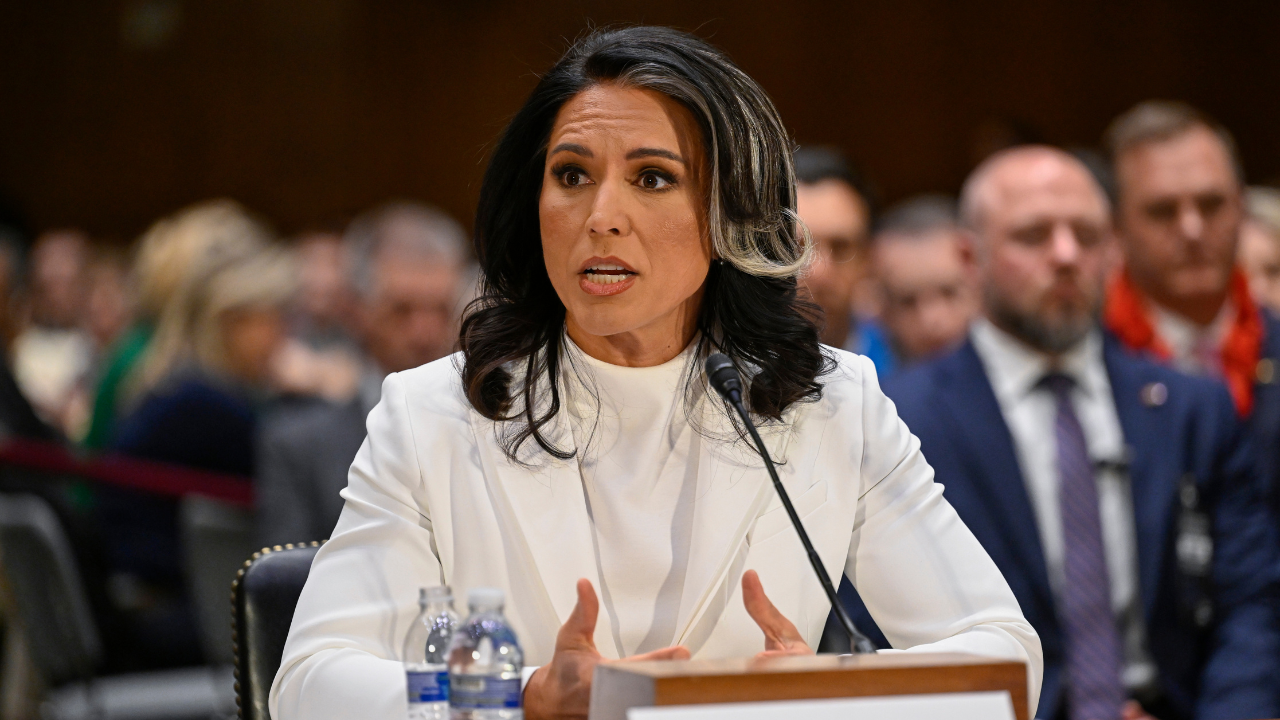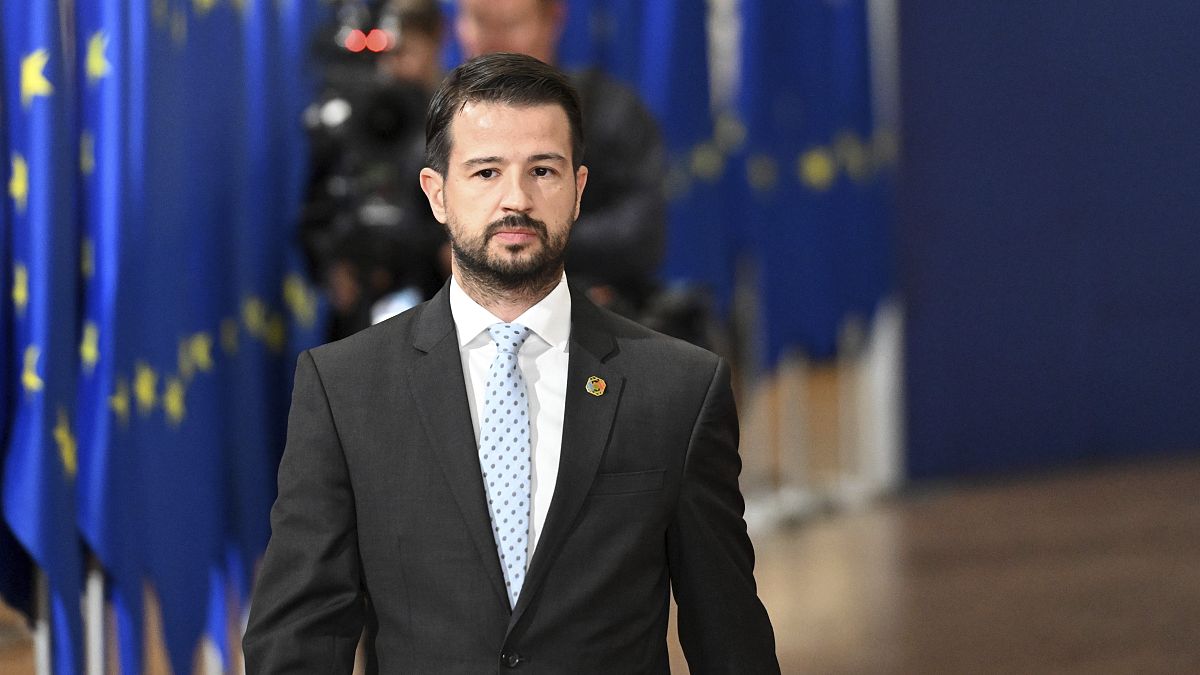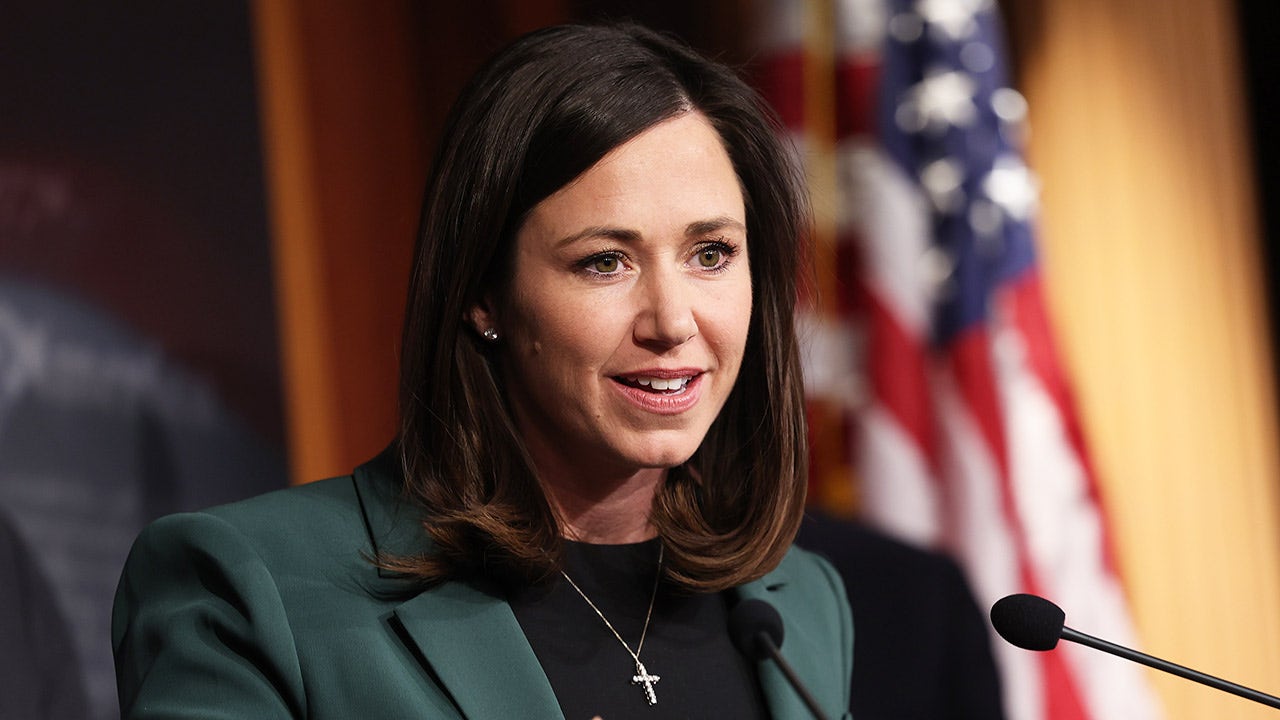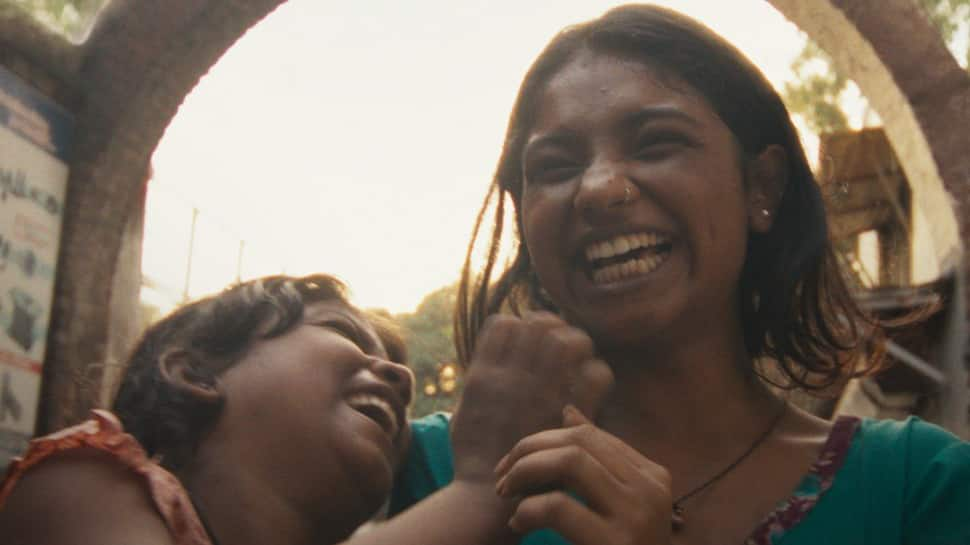Movie Reviews
Movie Review: 'His Three Daughters' on Netflix Is Character Acting Tour-de-Force

In another example of movies better than their streaming releases, we have Azazel Jacobs’ family drama His Three Daughters. Added to Netflix last month, only half a month after a brief theatrical engagement and a whole year after premiering at the Toronto Film Festival.
This is a traditional family drama which harkens back to the mid-budget type of filmmaking that existed in between blockbusters and independent film back in the day. It’s three very different sisters in one apartment for 104 minutes, forced to come to terms with each other.
That one apartment is in modern-day NYC, where Rachel (Natasha Lyonne) lives with her father, Vincent (Jay O. Sanders). Katie (Carrie Coon) and Christina (Elizabeth Olsen) are visiting on short notice as their dad is terminally ill and could die any day now. Jovan Adepo appears as Rachel’s supportive boyfriend.
All three siblings are estranged for various reasons, such as Christina living farthest away and Rachel being the least similar to the other two. With Vincent’s first wife, the mother of Katie and Christina, and his second wife, Rachel’s mother, both already passed, the three are forced to grieve and acknowledge their prolonged issues and tension.
His Three Daughters is not only for people who enjoy family dramas, but also people who enjoy theatre, since this is essentially a play caught on camera. For some, this is seen as “boring” and stagey. But to others, it’s a tour-de-force for acting, especially when your performers consist of some of the best character actresses currently working in entertainment.
Each lady is well cast, with Olsen as the caring and nurturing sister with her own, new family back home; Coon as the prickly, uptight sister; and Lyonne as the ‘burn out’ who spends most of her time getting high, watching TV and making money through betting.
Jacobs is seemingly the most recent male filmmaker to be fascinated by the chemistry between sisters as we’ve seen in the past from Woody Allen with both Interiors (1978) and Hannah and Her Sisters (1986) and Pedro Almodóvar through Volver (2006). This theme can even be traced back to Louisa May Alcott’s classic 1868 novel Little Women, naturally.
These are my kind of stories, so even if His Three Daughters isn’t the most original picture, it works for me. If you’re interested in quaint, introspective pieces on human relationships, this might be your thing too — if it doesn’t hit too close to home.

Movie Reviews
Captain America: Brave New World (2025) – Movie Review

Captain America: Brave New World, 2025.
Directed by Julius Onah.
Starring Anthony Mackie, Harrison Ford, Danny Ramirez, Shira Haas, Carl Lumbly, Tim Blake Nelson, Giancarlo Esposito, Xosha Roquemore, Jóhannes Haukur Jóhannesson, William Mark McCullough, Takehiro Hira, Harsh Nayyar, Alan Boell, John Cihangir, Eric Mbanda, Josh Robin, Sharon Tazewell, and Pete Burris.
SYNOPSIS:
Sam Wilson, the new Captain America, finds himself in the middle of an international incident and must discover the motive behind a nefarious global plan.

Early on in the utterly pointless overload of characters, story, and action that make up the forgettable Captain America: Brave New World, United States President Thaddeus Ross (now played by Harrison Ford, taking over the role from the deceased William Hurt back when the character was a military officer) pulls the new Captain America, Sam Wilson (Anthony Mackie) aside, attempting to work through some political differences before issuing a wish to have him rebuild a new Avengers.
Given what we know is coming (Robert Downey Jr. revealed to be returning to the franchise, this time to play Victor von Doom) and that numerous other heroes and villains have been teased across ending credits stingers, it’s not a bad idea to make a film that’s primary function is to get that ball rolling. It would also be an opportunity to dive further into Sam Wilson’s character, figuring out what kind of leader he wants to be and what he would look for throughout a recruitment process. Such a thing would also give Marvel Cinematic Universe overlord Kevin Feige a chance to move forward and begin building toward something, anything that might bring back the major event feel of these blockbuster extravaganzas.

As the mention of Thaddeus Ross has already implied, Captain America: Brave New World is a sequel to The Incredible Hulk. It’s also a follow-up to the Disney+ series Falcon and the Winter Soldier with some expected references to Captain America: Winter Soldier and Avengers: Endgame. As soon as characters start talking it’s also evident that even Kevin Feige knows a significant portion of the viewer base probably hasn’t seen everything, meaning that the screenplay (from the obscenely crowded team of director Julius Onah, Rob Edwards, Malcolm Spellman, Dalan Musson, and Peter Glanz) is littered with noticeably awkward exposition bringing up past events and summarizing who they are, what they have been through, what they are currently feeling, and what’s next.
Not only is this an unwieldy jumble, but the film also doesn’t have much to do with putting together a new team. Instead, this MCU installment is centered on the truth behind an assassination attempt on the life of Thaddeus Ross, with the tortured and experimented-on original super soldier Isaiah Bradley (a returning Carl Lumbly) as the vengeful prime suspect. Due to Sam Wilson’s connection with Isaiah, Thaddeus Ross removes this new Captain America from the investigation. Naturally, he doesn’t abide, as he and his Falcon protégé Joaquin Torres (Danny Ramirez) are convinced someone is pulling the strings.

They uncover something sinister in the process that I won’t spoil. Meanwhile, Thaddeus Ross continues working ahead on a Celestial Island treaty (look at that, I forgot one; technically, this is also a sequel to Eternals) where adamantium has been found. There is an additional layer of global intrigue with Giancarlo Esposito’s mercenary Sidewinder initially trying to steal and sell a fraction of it to a mysterious buyer. However, that opening segment feels as if it was initially part of something else, only for the script rewrites to come along and force it to connect to the adamantium. There is a lot of noticeable patchwork here that the filmmakers seemingly hope is ignored and buried underneath the copious amounts of weightless action.
These numerous battles seem to be putting Sam Wilson under a test, causing him to wonder if he should have taken the super soldier serum to make the superhero job easier on himself or if he is right in carving out his vision of Captain America. This somewhat ties into Thaddeus Ross’ character of hoping that his daughter Betty Ross (Liv Tyler in The Incredible Hulk) will notice that he has apparently tried to become a better person and that she will forget him. Aside from wanting to walk back his stance of initially being against augmented superheroes, there is nothing to gauge what kind of person or president he currently is. The rest of his arc is mired in a mystery that’s not so mysterious because, even though I am prohibited from spoiling anything significant in this review, the numerous damn trailers have already told you where this goes in the last 20 minutes.

It’s aggravating waiting and waiting for THAT to happen finally. Still, it also speaks to a larger problem here: Marvel is desperate to regain that box office glory to the point of outright spoiling key plot points in the marketing. There are still a few minor surprises, although nothing remotely exciting. Even the action, while abundant, feels driven by nothing and tossed in as a distraction from the outrageously convoluted plotting. The sole exception is CGI-fueled destruction at the end that, while still looking a bit unfinished if visually impressive, is mildly entertaining for the characters in the fight and its setting.
For those who thought Captain America: Brave New World would serve as a movie of the moment observing a problematic president when the actual United States currently has one, hoping that the fictional one might receive some comeuppance, that is not the case. The grand message here is eye-rolling, especially given what the real America is going through. What’s most frustrating is that for a “brave new world, “this is the same new mediocrity. Shield yourselves from this one.
Flickering Myth Rating – Film: ★ ★ / Movie: ★ ★
Robert Kojder is a member of the Chicago Film Critics Association and the Critics Choice Association. He is also the Flickering Myth Reviews Editor. Check here for new reviews, follow my Twitter or Letterboxd, or email me at MetalGearSolid719@gmail.com
Movie Reviews
Fire Movie Review: Police officer documents what he already suspects

Fire Movie Review: When every other film claims to be a gripping thriller, Fire manages the peculiar feat of being both inflammatory and lukewarm. Director J. Satish Kumar’s debut feature presents us with a predatory physiotherapist named Kasi (Balaji Murugadoss) whose modus operandi is as repetitive as a broken record – charm, seduce, film, blackmail, repeat. Inspired by the real-life story of Nagercoil Kasi, JSK has put his own spin on the tale, complete with a twist in the second half.
The narrative follows Inspector Saravanan (played by JSK himself) investigating Kasi’s disappearance after his elderly parents file a missing person report. What unfolds is less a mystery and more a procession of testimonies from Kasi’s victims, each story following the same template: a vulnerable woman, a calculated display of virtue, and inevitable betrayal.
The film’s first half reveals its hand with the subtlety of a spotlight in a dark room. By intermission, we’re well aware of our villain’s proclivities – a physiotherapist with a penchant for recording his conquests, always careful to keep his face hidden while his victims remain exposed, both literally and metaphorically. The second half merely serves as a roll call of his misdeeds, with Inspector Saravanan collecting statements like a jaded census taker.
JSK’s performance as Saravanan is competent – a grounded cop who spends more time listening to testimonies than engaging in the usual heroics kollywood is known for. Balaji Murugadoss brings initial charm to Kasi, but like a trick seen too many times, the character loses its ability to unsettle. The obligatory commercial elements – songs, fights, and dramatic confrontations – feel shoehorned in, serving only to stretch the runtime.
Fire isn’t entirely without merit. It shows occasional sparks of promise in its premise. It is more of an exposition of how women can be exploited and abused by a sociopath. You do genuinely feel for them. Like Rust Cohle might observe in True Detective, time becomes a flat circle here too – each victim’s story echoing the same pattern of manipulation. The film’s scattered strengths just twist the knife deeper. The result is a mystery that generates about as much heat as a matchstick in a rainstorm.
Written By: Abhinav Subramanian
Movie Reviews
Rounding (2025) – Movie Review

Rounding, 2025.
Directed by Alex Thompson.
Starring Namir Smallwood, Sidney Flanigan, Michael Potts, Rebecca Spence, Cheryl Lynn Bruce, David Cromer, Max Lipchitz, Kelly O’Sullivan, Bradley Grant Smith, Charin Alvarez, Nadirah Bost, Edwin Lee Gibson, Tim Hopper, Kayla Raelle, Ed Kross, Meighan Gerachis, Sara Deodhar, Larry Neumann Jr., Pierce Cravens, Hanna Dworkin, and Cruz Gonzalez-Cadel.
SYNOPSIS:
A driven young medical resident transfers to a rural hospital for a fresh start. There, the demons of his past start to catch up to him when he becomes consumed by the case of a young asthma patient.

Director Alex Thompson’s Rounding often has one wondering who needs help more: is it the young adult woman Helen (Sidney Flanigan, such an extraordinary revelation in Never Rarely Sometimes Always, deserving of more roles) who keeps finding herself in the hospital with severe asthma and no permanent solution, or her newly transferred Doctor James Hayman (Namir Smallwood) who might be correct that something isn’t adding up about the situation, but also appears mentally unstable for the job, gradually going through a psychological breakdown following a traumatic experience overlooking a patient at the last hospital.
The film also begins with on-screen text about the world’s first “physician” in Ancient Greece, once seen as a descendent of a Greek God, and how those patients were sometimes treated for exorcisms (before going into the modern-day definition of rounding.) It plays into this premise that James may be going through something worse than Helen. That is proven especially true once he starts panicking and hallucinating mythological creatures while blacking out, typically during a stressful visit with a patient.

With that in mind, one might assume Rounding is attempting to be a horror film. That is half true. It works best when functioning as a psychological piece about doctors and the hardships behind their duties (such as putting on an acting performance when explaining a devastating medical diagnosis, trying to empathize and give over a piece of the self, effectively showing humanity during sensitive conversations) and their relationships to patients. Not only are the performances grounded alongside a somewhat convincing depiction of simultaneously managing several patients on light rest, but the mystery of what is going on with the previously mentioned frequently sick woman is also an intriguing mystery.
When a character suggests that what’s really happening is “something typically only seen in the movies,” the narrative starts to feel like it is actively betraying that reality. That’s without getting into the horror aspect, which increasingly becomes more prevalent, that feels hastily slapped together with no lasting imagery, creativity, or impactful substance. Then, some loaded bombshell reveals in the finale go against all reasonable logic regarding how James would successfully get this position after a transfer. It’s an unwieldy mess that’s generally only engaging when sticking to difficult conversations with hospital patients. However, even then, the overreliance on dumping medical jargon will be frustrating for some and is occasionally emotionally detaching.

It’s an unfortunate surprise, considering Alex Thompson (not co-directing this time alongside regular collaborator Kelly O’Sullivan, although she does appear in a small role) typically has no issue allowing human drama to feel real while giving it weight that doesn’t dip into mawkish territory. Here, co-writing the screenplay alongside Christopher Thompson, there isn’t so much a blending of genres but more of forcing one into a story without realizing it’s not fitting.
Rounding has sat on a shelf for so long that the far superior Ghostlight was made, chosen to play Sundance, and released before this getting a non-festival release. The reason for that is clear after watching this. It’s an uneven blur of ideas, genres, motives, and reveals that never coalesce into anything satisfyingly whole or worthwhile.
Flickering Myth Rating – Film: ★ ★ / Movie: ★ ★
Robert Kojder is a member of the Chicago Film Critics Association and the Critics Choice Association. He is also the Flickering Myth Reviews Editor. Check here for new reviews, follow my Twitter or Letterboxd, or email me at MetalGearSolid719@gmail.com
https://www.youtube.com/watch?v=embed/playlist
-

 Technology1 week ago
Technology1 week agoMeta bets on its Ray-Bans mainstream appeal with a Super Bowl ad
-

 Politics1 week ago
Politics1 week agoTulsi Gabbard confirmation fate to be tested with key committee vote
-

 Technology1 week ago
Technology1 week agoTrump’s first 100 days: all the news affecting the tech industry
-

 News1 week ago
News1 week ago'Beyond betrayal.' Venezuelans in Florida are angry at Trump immigration policy
-

 World1 week ago
World1 week agoMontenegro pursues values-driven EU enlargement process
-

 Politics1 week ago
Politics1 week agoSenate Republicans introduce bill to reform birthright citizenship, following Trump’s controversial order
-

 World1 week ago
World1 week agoTrump says US will ‘own’ Gaza in redevelopment plan
-

 World1 week ago
World1 week agoNATO chief says European defence without US ‘will not work’



















